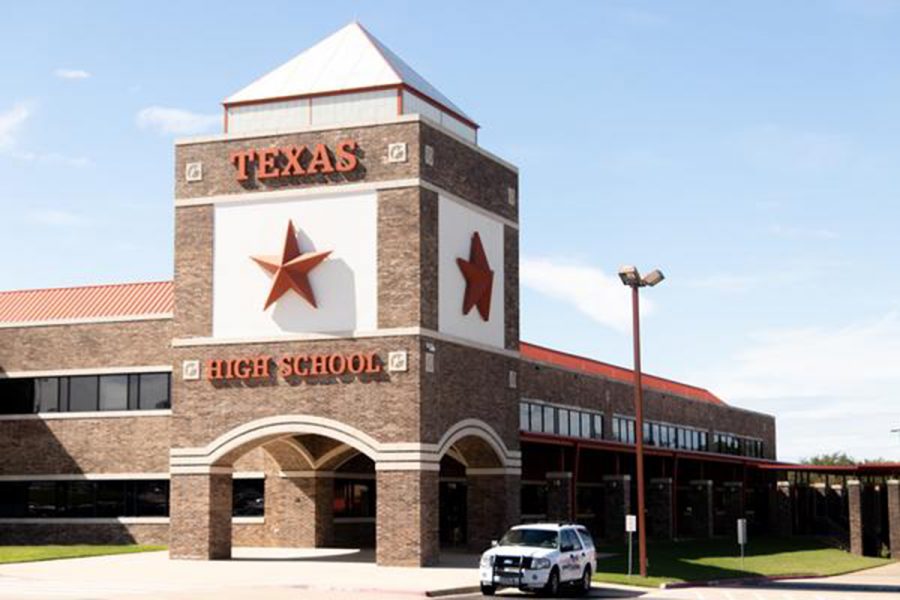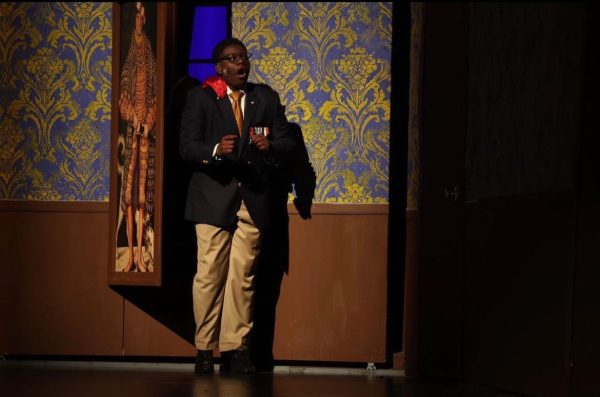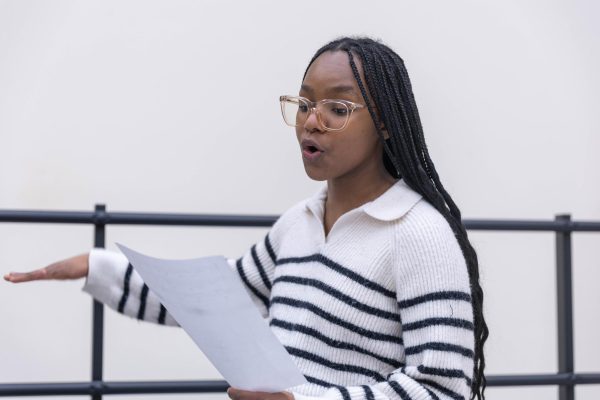A revolutionary design
The world-renowned architects behind Texas High
October 31, 2018
Few students recall a time when there was nothing but an empty field beside Summerhill road, void of the high school yet to engulf its blank field. For those nostalgics who do, however, they no doubt see visions of the 1960s at Texas High. Their school had become like that of a university, spacious and contemporary. The parking lot swelled with bright red Ford Mustangs, smooth grey Camaros and soft yellow Beetles. Freshmen in bell-bottoms pranced up the steps, grinning at the notion that this would be their educational home for the next four years. While the mastermind behind Tigerland as we know it may be departed from this world, we will forever be thankful for the reality he created.
Ironically enough, the land just “west of Kennedy Lane” was originally an old hog farm. The area spanned a total of 91 acres, wedging a hefty $137,000 gap in the district’s bank account. The increasing value of the U.S. dollar from the 1960s to 2018 means that this sum would equate to an imprecise $1.06 million today.
We haven’t even taken into consideration the evaluated construction costs, which were estimated to break $2.5 million. Today, that would be an enormous, multimillion-dollar contract. But besides the astounding financial figures, what is important is what the transaction served to promote: the building of our adored high school. — Charli Hueter
Two years following 1964, Texas High was in need of fresh beginnings. The old establishment, a blocky site not unlike that of a wedding cake with its many levels, had functioned well before segregation laws were superseded. It took two tries before the board agreed on a more sheet-cake-like approach for a new campus, which would clear the way for unification and a larger student population.
Around this time, Caudill-Rowlett-Scott (CRS), a firm consisting of four budding architects, was gaining popularity for their ingenuity in the erection of the Blackwell Elementary School. Referred to as a “revolution in school design,” they implemented the idea expressed in Caudill’s 1941 book, “Space for Teaching,” in which he highlights the “outmoded standards” still abided by in school construction.
Caudill-Rowlett-Scott was not only famous for their innovative research, but also for their infamous “squatter” technique. With the closest firm during their initial project clocking in at almost 500 miles in commute time, the team realized that they were about to waste a lot of energy and money on unnecessary fees. Likewise, they temporarily stationed their office closer to the site — a tactic that was so effective, it was never discarded.
Caudill-Rowlett-Scott went on to open its first regional office in Oklahoma, and eventually, even New York. In the city of Houston, it became the largest local architectural firm due to its composition of seven propitious architects. By the 1960s, around the time Texas High enlisted their services, CRS also began working internationally.
In 1978, the Caudill-Rowlett-Scott firm made headlines when a multimillionaire from Saudi Arabia invested in the company. Our very own architects, once merely professors at Texas A&M, had founded the “largest engineering corporation in the United States.” With this in mind, Texas High School does not just withhold the legacy of its revered alumni, but also that of its world-renowned architects.
Ultimately, it doesn’t matter what CRS went on to fabricate when they departed from Texarkana. For us, their accomplishments climax only at the institution of our beloved school, which has stood for over half a century as a hearth for new beginnings and old memories. With their avant-garde twist on former structural concepts, it was a piece of cake for the architects of Texas High to create a campus that would persist throughout the coming years.





















